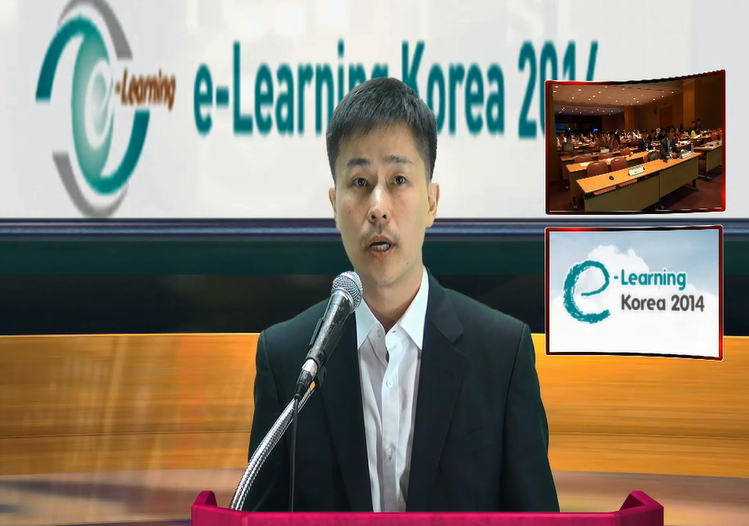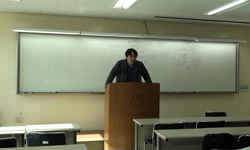This study set out to analyze the specific content and patterns of Sajae Kim Jeong-guk's Cheokeon(摭言) with a focus on figures and events recorded in the book and examine his agony and conscious orientation as a bureaucratic man of letters inherent...
http://chineseinput.net/에서 pinyin(병음)방식으로 중국어를 변환할 수 있습니다.
변환된 중국어를 복사하여 사용하시면 됩니다.
- 中文 을 입력하시려면 zhongwen을 입력하시고 space를누르시면됩니다.
- 北京 을 입력하시려면 beijing을 입력하시고 space를 누르시면 됩니다.

16세기 필기 『摭言』의 성격과 기록 양상 = A Study of the Nature and Recording Aspects of“Cheokeon(摭言)” 16th Century Pilgi(筆記)
한글로보기https://www.riss.kr/link?id=A108058902
-
저자
곽미라 (동국대학교 불교학술원)
- 발행기관
- 학술지명
- 권호사항
-
발행연도
2022
-
작성언어
Korean
-
주제어
16th Century Pilgi(筆記) ; Cheokeon(摭言) ; Kim Jeong-guk ; reality ; accuracy ; accuracy ; incident ; 16세기 필기 ; 『척언(摭言)』 ; 김정국 ; 사실성 ; 정확성 ; 의식지향
-
등재정보
KCI등재
-
자료형태
학술저널
-
수록면
41-77(37쪽)
-
KCI 피인용횟수
0
- 제공처
-
0
상세조회 -
0
다운로드
부가정보
다국어 초록 (Multilingual Abstract)
"Facts" hold enormous significance in Pilgi, which never steers away from the perspective of recording facts basically and finds a mainstream in anecdotes of people. This is actually a principle penetrating different genres including Pilgi, hearsay, and historical romance. Paying attention to "reality" as one of elements that defined the nature of Pilgi in the 16th century, the present study analyzed Cheokeon that followed this basic principle of Pilgi most faithfully. Most of all, Cheokeon allocates a majority of its pages to anecdotes of real figures of the times and rarely tells stories of the hearsay nature. It also records many real events such as massacres of scholars and administrations of major criminal cases.
Paying attention to these aspects of the book, the study found that it conveyed facts by recording memories in the style of "anecdotes of people" instead of simply sorting out and arranging information about people. It is a common case that the evaluations of the same people vary clearly according to the different positions of the narrative subjects of such records. Cheokeon maintains an objective viewpoint and accuracy as much as possible, dealing with figures and events. In the study, the events recorded in the book were mainly divided into "Gyeongyeons," "administrations of major criminal cases," and "massacres of scholars," and these categories matched Kim's career as a government official to some degree.
These categories were used to figure out the recording patterns and characteristics of Cheokeon and understand the values to which he was oriented roughly. That is, they are "subjects equipped with ability and sincerity," "government officials that are clear with business handling and had love for the people," and "Confucian scholars with flexibility." As an intellectual during a historical transition, Kim included the outcomes of his identity search and his contemplation of the times in colorful ways in his Pilgi, thus being able to convey the information about them and the truth of events to next generations in rich ways. He demonstrated how individual figures were connected together with their anecdotes put together to tell a full story in records scattered here and there.
This study set out to analyze the specific content and patterns of Sajae Kim Jeong-guk's Cheokeon(摭言) with a focus on figures and events recorded in the book and examine his agony and conscious orientation as a bureaucratic man of letters inherent in them.
"Facts" hold enormous significance in Pilgi, which never steers away from the perspective of recording facts basically and finds a mainstream in anecdotes of people. This is actually a principle penetrating different genres including Pilgi, hearsay, and historical romance. Paying attention to "reality" as one of elements that defined the nature of Pilgi in the 16th century, the present study analyzed Cheokeon that followed this basic principle of Pilgi most faithfully. Most of all, Cheokeon allocates a majority of its pages to anecdotes of real figures of the times and rarely tells stories of the hearsay nature. It also records many real events such as massacres of scholars and administrations of major criminal cases.
Paying attention to these aspects of the book, the study found that it conveyed facts by recording memories in the style of "anecdotes of people" instead of simply sorting out and arranging information about people. It is a common case that the evaluations of the same people vary clearly according to the different positions of the narrative subjects of such records. Cheokeon maintains an objective viewpoint and accuracy as much as possible, dealing with figures and events. In the study, the events recorded in the book were mainly divided into "Gyeongyeons," "administrations of major criminal cases," and "massacres of scholars," and these categories matched Kim's career as a government official to some degree.
These categories were used to figure out the recording patterns and characteristics of Cheokeon and understand the values to which he was oriented roughly. That is, they are "subjects equipped with ability and sincerity," "government officials that are clear with business handling and had love for the people," and "Confucian scholars with flexibility." As an intellectual during a historical transition, Kim included the outcomes of his identity search and his contemplation of the times in colorful ways in his Pilgi, thus being able to convey the information about them and the truth of events to next generations in rich ways. He demonstrated how individual figures were connected together with their anecdotes put together to tell a full story in records scattered here and there.
국문 초록 (Abstract)
조선전기(15세기) 필기의 관점에서 비교해 보면 『척언(摭言)』은 전통적인 필기의 양식적 특성을 따르면서도 주로 인물과 사건에 대한 사실적 기록을 지향하는 ‘야사류(野史類) 필기’의 성격이 강한 저술이다. 기본적으로 『척언(摭言)』은 인물ㆍ사건의 전기(傳記)적 정리나 골계미가 가미된 소화의 형식이 아니라 ‘일화[野乘]’의 방식으로 찬자의 견문을 기록하여 사실을 전달하고 있다. 이러한 기록물은 서술 주체의 입장차에 따라 인물과 행위에 대한 평가가 극명하게 달라지게 마련인데, 『척언(摭言)』은 인물과 사건을 다루며 최대한 정확한 사실을 전달하려는 태도를 견지하고 있다. 이로써 그들에 대한 정보와 사건의 실체를 후대에 풍부하게 전할 수 있게 되었다.
이를 바탕으로 『척언(摭言)』에 기록된 이야기 가운데 큰 비중을 차지하는 인물ㆍ사건의 주된 내용을 파악한 결과 크게 ‘무고(誣告)ㆍ옥사(獄事)’, ‘경연(經筵)’, ‘사화(士禍)’의 세 부분으로 압축되었다. 또한 각 이야기의 주체가 대하는 대상에 따라 ‘관리(官吏)’, ‘문인(文人)’, ‘신하(臣下)’로 구분되는 그들의 역할은 종국에는 다시 ‘사(士)’로 수렴된다. 16세기 전반의 사대부 문인들은 그들 자신을 새로운 사회를 이끌어갈 국가의 중추 세력으로 인식했다. 따라서 그들의 사회가 견고하게 자리 잡고 뿌리 내리기를 희구했다. 그러기 위해서는 문인학자에 머물지 않고 사회 변혁을 위해 분투하는 실천적 관료의 자질이 필요했다. 『척언(摭言)』에 수록된 인물 일화는 대체로 이런 동기에 부합한다고 볼 수 있다.
이렇게 김정국은 역사적 전환기에 놓인 지식인으로서 개인의 정체성 모색의 산물과 시대적 고민을 『척언(摭言)』에 다채롭게 담아냈다. 『척언(摭言)』을 통해 자신이 지향하는 사대부 문인지식인으로서의 자질과 가치를 표출한 것이다.
이 글은 16세기 필기류 저술인 사재(思齋) 김정국(金正國, 1485∼1541)의 『척언(摭言)』을 대상으로 그 성격과 구체적인 기록 양상을 분석하고, 작품에 내재된 사대부 문인으로서의 고민과 의...
이 글은 16세기 필기류 저술인 사재(思齋) 김정국(金正國, 1485∼1541)의 『척언(摭言)』을 대상으로 그 성격과 구체적인 기록 양상을 분석하고, 작품에 내재된 사대부 문인으로서의 고민과 의식지향의 특징적 면모를 살펴본 것이다. 특히 여기에서는 16세기 필기의 성격을 규정하는 한 요소로서 ‘사실 기록의 정확성’에 착목하여 고찰하였다. 무엇보다 『척언』이 시평을 위주로 한 시화(詩話)나 외설담ㆍ기이담 등의 소화(笑話)가 거의 없고, 당대의 실존 인물을 대상으로 한 인물 일화가 대부분의 비중을 차지하며, 역사에 기록될 만한 실제 사건을 다수 기록하고 있다는 점에 주목한 것이다. 이는 이전 시기 필기가 주로 개인의 관심 분야에 관한 견문을 기록한 것과 확연히 구분되는 양상이다.
조선전기(15세기) 필기의 관점에서 비교해 보면 『척언(摭言)』은 전통적인 필기의 양식적 특성을 따르면서도 주로 인물과 사건에 대한 사실적 기록을 지향하는 ‘야사류(野史類) 필기’의 성격이 강한 저술이다. 기본적으로 『척언(摭言)』은 인물ㆍ사건의 전기(傳記)적 정리나 골계미가 가미된 소화의 형식이 아니라 ‘일화[野乘]’의 방식으로 찬자의 견문을 기록하여 사실을 전달하고 있다. 이러한 기록물은 서술 주체의 입장차에 따라 인물과 행위에 대한 평가가 극명하게 달라지게 마련인데, 『척언(摭言)』은 인물과 사건을 다루며 최대한 정확한 사실을 전달하려는 태도를 견지하고 있다. 이로써 그들에 대한 정보와 사건의 실체를 후대에 풍부하게 전할 수 있게 되었다.
이를 바탕으로 『척언(摭言)』에 기록된 이야기 가운데 큰 비중을 차지하는 인물ㆍ사건의 주된 내용을 파악한 결과 크게 ‘무고(誣告)ㆍ옥사(獄事)’, ‘경연(經筵)’, ‘사화(士禍)’의 세 부분으로 압축되었다. 또한 각 이야기의 주체가 대하는 대상에 따라 ‘관리(官吏)’, ‘문인(文人)’, ‘신하(臣下)’로 구분되는 그들의 역할은 종국에는 다시 ‘사(士)’로 수렴된다. 16세기 전반의 사대부 문인들은 그들 자신을 새로운 사회를 이끌어갈 국가의 중추 세력으로 인식했다. 따라서 그들의 사회가 견고하게 자리 잡고 뿌리 내리기를 희구했다. 그러기 위해서는 문인학자에 머물지 않고 사회 변혁을 위해 분투하는 실천적 관료의 자질이 필요했다. 『척언(摭言)』에 수록된 인물 일화는 대체로 이런 동기에 부합한다고 볼 수 있다.
이렇게 김정국은 역사적 전환기에 놓인 지식인으로서 개인의 정체성 모색의 산물과 시대적 고민을 『척언(摭言)』에 다채롭게 담아냈다. 『척언(摭言)』을 통해 자신이 지향하는 사대부 문인지식인으로서의 자질과 가치를 표출한 것이다.
참고문헌 (Reference)
1 "한국고전종합DB"
2 "조선왕조실록DB"
3 정출헌, "조선 전기 잡록과 『추강냉화』, 남효온의 깊은 슬픔과 시대정신" 민족문학사연구소 (54) : 143-183, 2014
4 김범, "사화와 반정의 시대" 역사비평사 2007
5 김병헌, "사재집" 아담앤달리 2016
6 송웅섭, "사재 김정국의 교유관계와 기묘사림 내에서의 위치" 동국역사문화연구소 (63) : 1-43, 2017
7 신상필, "사실의 기록과 ‘傳’ 양식의 새로운 가능성 -「柳淵傳」을 중심으로-" 동방한문학회 (39) : 121-140, 2009
8 이민경, "김정국의 『思齋摭言』과 己卯士禍에 대한 서술시각" 동양한문학회 53 : 269-305, 2019
9 민족문화추진위원회, "국역 대동야승"
10 임완혁, "筆記에서 事實의 意味 -『鶴山閑言』을 통해 본-" 동방한문학회 (39) : 89-120, 2009
1 "한국고전종합DB"
2 "조선왕조실록DB"
3 정출헌, "조선 전기 잡록과 『추강냉화』, 남효온의 깊은 슬픔과 시대정신" 민족문학사연구소 (54) : 143-183, 2014
4 김범, "사화와 반정의 시대" 역사비평사 2007
5 김병헌, "사재집" 아담앤달리 2016
6 송웅섭, "사재 김정국의 교유관계와 기묘사림 내에서의 위치" 동국역사문화연구소 (63) : 1-43, 2017
7 신상필, "사실의 기록과 ‘傳’ 양식의 새로운 가능성 -「柳淵傳」을 중심으로-" 동방한문학회 (39) : 121-140, 2009
8 이민경, "김정국의 『思齋摭言』과 己卯士禍에 대한 서술시각" 동양한문학회 53 : 269-305, 2019
9 민족문화추진위원회, "국역 대동야승"
10 임완혁, "筆記에서 事實의 意味 -『鶴山閑言』을 통해 본-" 동방한문학회 (39) : 89-120, 2009
11 이병휴, "朝鮮前期 疎外官人의 隱居生活-金安國ㆍ金正國의 경우" 역사교육학회 31 : 102-127, 2003
12 송웅섭, "『己卯錄補遺』의 板本과 書名에 대한 검토 - 규장각 소장 『大東野乘』 所收本을 중심으로 -" 규장각한국학연구원 (50) : 361-384, 2017
13 임상혁, "<기묘당적>과 <기묘록보유>의 저술 의의에 대한 검토" 진단학회 (132) : 95-133, 2019
14 장영희, "16세기 필기(筆記)의 일고찰(一考察) - ?기묘록(己卯錄)?과 ?용천담적기(龍泉談寂記)?" 민족문학사연구소 26 : 171-198, 2004
15 현혜경, "16세기 잡록 연구 - 「음애일기」, 「용천담적기」, 「견한잡록」을 중심으로" 한국고전연구학회 6 : 59-91, 2000
16 정출헌, "16세기 사림파 문인의 문학사회학적 인식 지평과 문학생성 공간의 연구" 동양한문학회 24 (24): 151-176, 2007
17 곽미라, "16세기 筆記를 통해 본 중인층 지식인의 내면과 타자인식" 한국고전문학회 (57) : 177-201, 2020
18 윤훈표, "15세기 말엽부터 16세기 중엽까지 경연의 변모와 그 의미" 역사실학회 (51) : 75-111, 2013
동일학술지(권/호) 다른 논문
-
국외의 동아시아 연구와 한국학 동향 -전근대 생태문학에 관한 영어권 저서를 중심으로-
- 열상고전연구회
- 김유미
- 2022
- KCI등재
-
甁窩 李衡祥 『芝嶺錄』 제6책의 편찬 특징과 의미 -『詩藪』 변용 양상을 중심으로-
- 열상고전연구회
- 장박
- 2022
- KCI등재
-
주희의 중과 부중(不中)의 미발 및 그것에 관한 호락학자들의 논쟁
- 열상고전연구회
- 이종우
- 2022
- KCI등재
-
인도네시아 옛이야기를 통해 생각하는재난과 생태적 삶, 공생의 인문학
- 열상고전연구회
- 권혁래
- 2022
- KCI등재
분석정보
인용정보 인용지수 설명보기
학술지 이력
| 연월일 | 이력구분 | 이력상세 | 등재구분 |
|---|---|---|---|
| 2028 | 평가예정 | 재인증평가 신청대상 (재인증) | |
| 2022-01-01 | 평가 | 등재학술지 유지 (재인증) |  |
| 2019-01-01 | 평가 | 등재학술지 유지 (계속평가) |  |
| 2016-01-01 | 평가 | 등재학술지 유지 (계속평가) |  |
| 2012-01-01 | 평가 | 등재 1차 FAIL (등재유지) |  |
| 2009-01-01 | 평가 | 등재학술지 선정 (등재후보2차) |  |
| 2008-01-01 | 평가 | 등재후보 1차 PASS (등재후보1차) |  |
| 2006-01-01 | 평가 | 등재후보학술지 선정 (신규평가) |  |
학술지 인용정보
| 기준연도 | WOS-KCI 통합IF(2년) | KCIF(2년) | KCIF(3년) |
|---|---|---|---|
| 2016 | 0.54 | 0.54 | 0.56 |
| KCIF(4년) | KCIF(5년) | 중심성지수(3년) | 즉시성지수 |
| 0.59 | 0.58 | 0.973 | 0.16 |




 eArticle
eArticle






